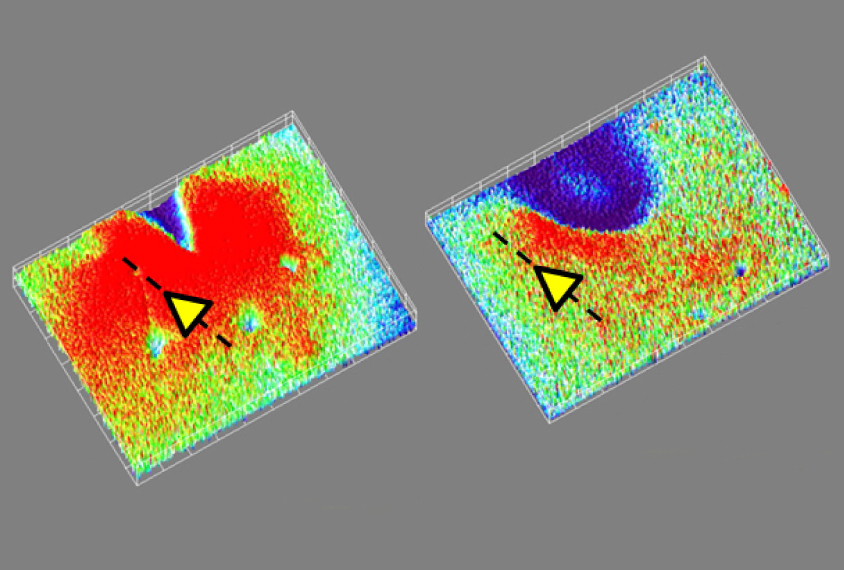
New stimulator can target small set of mouse neurons
A newly developed magnetic coil gives researchers a stable, precise way of probing the function of neural circuits.
A newly developed magnetic coil gives researchers a stable, precise way of probing the function of neural circuits1.
Researchers typically use electrodes to stimulate neurons in mice in order to delineate the brain’s circuitry. But the metal implants can trigger inflammation and scarring over time, curtailing the current so it cannot reach target neurons.
The new device, described 9 December in Science Advances, consists of a tiny loop of copper wire sheathed in silicon. It emits a magnetic field that permeates the sheath, stimulating neurons up to 200 micrometers away.
The magnetic field fans out in a single plane. Conventional electrodes, by contrast, send electricity in all directions, giving researchers less control over which neurons they activate.
Researchers must remove part of the animal’s skull to implant the copper ‘microcoil,’ which is about the width of a human hair. Copper leads attach the implant to a power source and controller outside the brain.
The researchers tested the microcoil in slices of mouse brain tissue. When they dialed down the stimulation, they were able to activate a small set of neurons with greater specificity than is possible using traditional electrodes.
They also implanted the device in the motor cortex of 24 mice. Stimulating neurons in this region, which governs voluntary movements, caused the whiskers of the mice to twitch, a response similar to that elicited by electrical stimulation.
The microcoil may also have clinical utility. It could provide a more targeted alternative to brain stimulation with implanted electrodes in people with epilepsy or other neurological conditions. The researchers aim to make a smaller microcoil that would be even more precise than the current design.
- Lee S.W. et al. Sci. Adv. 2, e1600889 (2016) PubMed
Explore more from The Transmitter

Inclusivity committee disbands in protest at Canadian neuroscience institute

